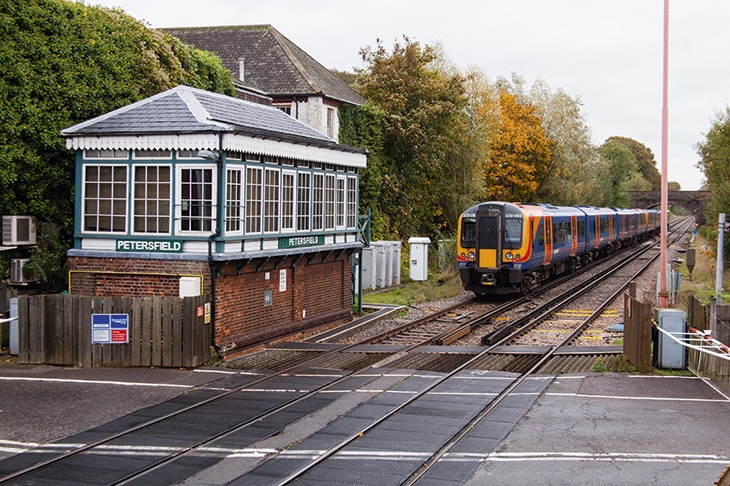Petersfield signal box is in the wrong place. Or at least it is now. When it was built in the 1880s, it was in precisely the right place, near the tracks and next to the level crossing that the signalman controlled. It had to be. Signal boxes had a series of big levers which controlled both signals and the points on the track. In the days before electric motors, the boxes had to be as near as possible to the points or shifting the levers became too difficult, especially in cold weather.
Petersfield is Grade II listed because it is a rare example of a box containing equipment developed by the London & South Western Railway, which built most of the lines out of Waterloo. It now faces demolition as Network Rail is decommissioning the box and wants to improve the level crossing next to it.
In the early days of the railway, ‘policemen’ had to stand next to the points to change them and were soon provided with little huts for shelter. Then, as trackwork became more complex, several points were controlled from one location and the signal box was born.
The signal box was often the local hub of the railway, frequently busier than the local station as the P-Way men (the trackworkers), the signalmen and various local people — a mix of enthusiasts and the nosy, often schoolchildren — would pop in for a chat and a cup of tea from the kettle that was always kept near to boiling on the hotplate. Keeping the box tidy and cosy was a source of great pride for the signalmen, who often spent long lonely shifts at night ensuring the smooth passage and, above all, safety of the trains they controlled.








Comments
Join the debate for just £1 a month
Be part of the conversation with other Spectator readers by getting your first three months for £3.
UNLOCK ACCESS Just £1 a monthAlready a subscriber? Log in